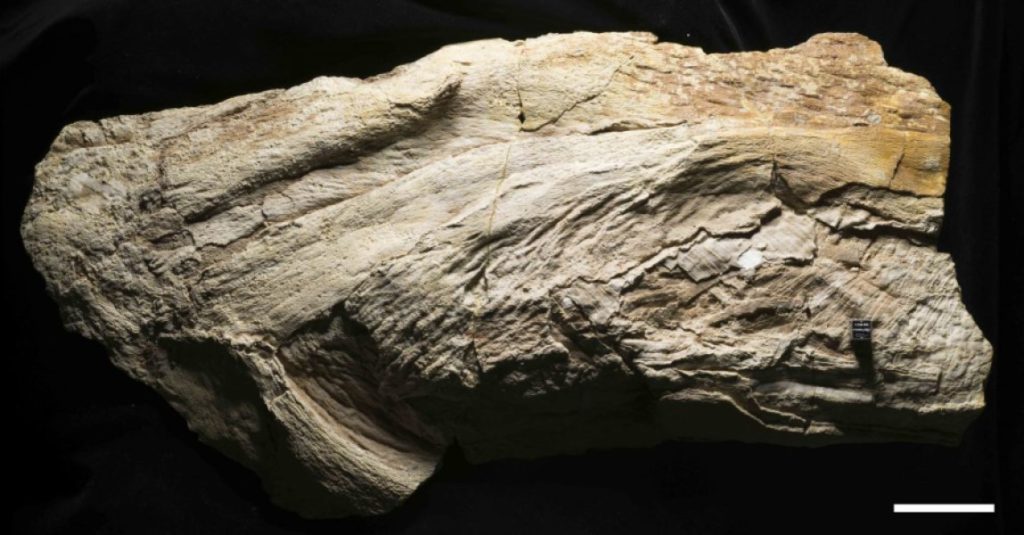@WFS,world Fossil Society,Riffin T Sajeev,Russel T Sajeev
Resolving the identity of Platylithophycus, an enigmatic fossil from the Niobrara Chalk
(Upper Cretaceous, Coniacian–Campanian)
Citation:Allison W. Bronson, John G. Maisey. Resolving the identity of Platylithophycus, an enigmatic fossil from the Niobrara Chalk (Upper Cretaceous, Coniacian–Campanian). Journal of Paleontology, 2018; 1 DOI: 10.1017/jpa.2018.14

A photo of the Platylithophycus cretaceus specimen. The scale bar is 5 centimeters.
Credit: © Mike Eklund
Misidentified fossils are common in paleontology, but Platylithophycus has undergone a particularly problematic series of descriptions. The holotype of P. cretaceus comes from the Upper Cretaceous Niobrara Chalk of Kansas, and was first described as a calcareous green alga, based on the surface texture of the specimen. Later, Platylithophycus was re-identified as a sepiid cephalopod, based partly on a comparison of microstructure between P. cretaceus and the pen of modern squids. Platylithophycus then became part of the University of Nebraska teaching collection, where, according to paleontological legend, an undergraduate student suggested that the fossil’s tessellated surface looked a lot like shark cartilage. However, that interpretation has not been formally proposed until now. This work re-describes the holotype of Platylithophycus cretaceus as part of the branchial endoskeleton of an elasmobranch, based on both gross morphology and ultrastructure, including recognizable tessellated cartilage with intertesseral pores and joints.
@WFS,world Fossil Society,Riffin T Sajeev,Russel T Sajeev



 April 27th, 2018
April 27th, 2018  Riffin
Riffin  Posted in
Posted in  Tags:
Tags: 